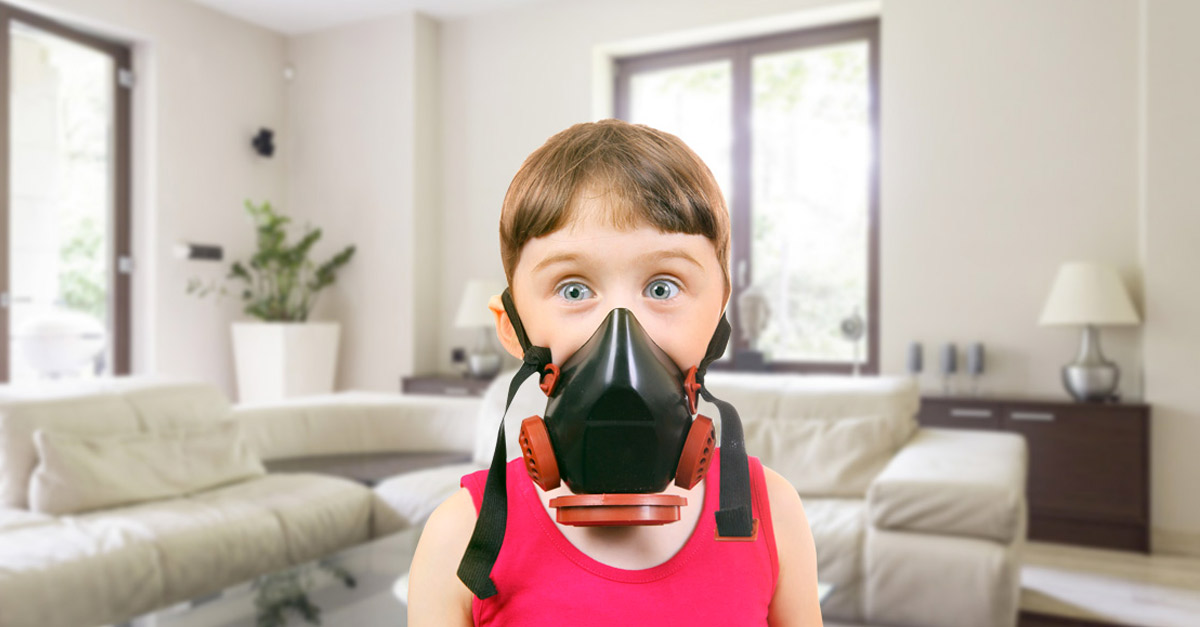Paints, furniture, cooking food, odours and makeup are just some of the things that pollute inside our homes, putting our daily well-being at risk. Who said that the air we breathe outside is worse?
It is nothing new that air pollution is the cause of several diseases related to the most varied factors … but what would happen if we really thought that inside our homes the air quality is five times worse than outside?
Well yes, the air we breathe when we are indoors, that is for 90% of our time, is highly polluted and much unhealthier than what we breathe in the outdoors, causing an extremely important potential damage to our body.
If we think what pollutants influence heavily the healthiness of confined spaces, in which we spend the vast majority of our days, the result is truly shocking. Among the most polluting indoor pollutants, in fact, we find non-certified building materials (dyes, paints, adhesives, etc.), furniture and furnishings, all combustion processes (stoves, fireplaces, etc.) or their by-products (fumes from cooking food, unburnt fumes, etc.), household cleaning products (bleaches, acetone, etc.), cosmetics for personal care and hygiene (perfumes, deodorants, soaps , nail polishes, etc.) or laundry products (detergents and fabric softeners).
It is now clear: the environment in which we live is becoming increasingly aggressive towards our body, in fact the interactions we continuously have with many toxic or irritating chemicals, previously non-existent or minimally present in our daily lives, often result in the birth of problems or disorders that can alter our well-being and health.
But why is the quality of the air in confined spaces increasingly putting the health of individuals at risk?
First of all, today’s buildings are now sealed and isolated from doors and windows so energy efficient that not even the slightest draft can pass.
The fact that it is not always possible to open the windows with a certain regularity (that is at least 5 minutes every 2 hours) makes our homes effectively “gas chambers”, where the concentrations of external pollutants add up to those generated by all indoor air pollutants.
The result? Poor ventilation and stale air, factors that prevent proper aeration, increased psychophysical stress and climatic discomfort inside our buildings.
Furthermore, we must keep in mind that the indoor contaminants present in our homes are invisible and odourless, therefore they are unknown enemies of which we are not aware. This leads to underestimating the importance of the problem and underestimating its impact on the entire community!
If city traffic and outdoor pollution damage our health, what happens to us living practically always indoors, in highly polluted places compared to the outside?
The answer is obvious, but it may not be definitive. In order to arrive at a complete solution of the problem, in fact, we can decide to face it from several points of view: if on the one hand it is difficult to influence the external environment, as single protagonists we have the opportunity to improve our internal habitat.
HOW CAN WE COMBAT INDOOR POLLUTION?
In the next articles we will try to discuss the topic of indoor pollution by examining its secrets, providing all the useful information for a solid awareness of the problem, from the analysis of an indoor environment, to the different ways of choosing a material according to its healthiness, intervention techniques and decontamination of buildings, to the design logics for the new building.
Architect Leopoldo Busa,
Expert in indoor air quality

